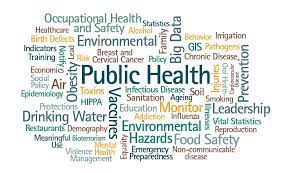Public Health Questions and Answers for Students
In which disease conditions is prevalence more appropriate and why?
Answer: Prevalence is most appropriate in long-standing or chronic diseases as the window period in which a diagnosis can be established is much higher and therefore, cases will not be missed during a survey. On the other hand, short duration diseases would occur and recover so fast that they cannot be examined (or are missed) at a specific point in time.
In which diseases is incidence more appropriate and why?
Answer: Incidence is most appropriate in disease of a short duration as such diseases may occur more than once during a reference period and all the episodes may not be captured if the prevalence of the disease were to be measured. E.g. If a study were done on diarrhea, if the number of people suffering from diarrhea in a one-year period was measured, it would always be much lower than the number of episodes of diarrhea that the population staying in that area would suffer.
What do you mean by a primary case?
Answer: The first case of a disease which occurs in a community/area is called the primary case. Many a time, the primary case may not be recognized as the disease comes to notice much later. Only by historical review can, the possible primary case, be located in such a case. In some disease like acute conjunctivitis a number of primary cases may occur almost at the same point in time. In such a scenario, the primary cases are referred to as “Co–primaries”
What do you mean by an index case?
Answer: The first case, which comes to the attention of the health authorities in an area, is referred to as the index case. Such a case may or may not be the primary case.
What is Secondary Attack Rate?
Answer: The secondary attack rate refers to the number of cases occurring among contacts of a primary case within the known incubation period of the disease. The denominator refers to the number of susceptible contacts who are in close touch with the primary case. However, if whether a person among the contacts has previously suffered from the specific disease and developed immunity is not known, then all the contact should be considered in the denominator. Such persons are usually other members of the family / neighborhood / institution who stay with the primary case.
What is a secular trend?
Answer: If the pattern or trend of disease frequency changes only over many years then it is called a secular trend.
What is a cyclic trend?
Answer: If the occurrence of disease changes over a short duration of time like a year, it is called a cyclic trend. Most epidemic diseases in India show a cyclic trend. Some diseases change in frequency over seasons and such changes are referred to as seasonal changes – Measles and chickenpox are examples of such diseases.
What is herd immunity? Give examples where it is important?
Answer: The immune status of a group of people/community is called herd immunity as it is the immune status of the ‘herd’ of people. For many communicable diseases, an outbreak of disease is only possible if the level of immunity is sufficiently low and there are a large number of susceptibles in the population. In diseases like poliomyelitis, diphtheria, measles etc., herd immunity plays an important role. However, in a disease like tetanus or rabies where every individual is at risk unless specifically protected, herd immunity plays no role.
What is a nosocomial infection?
Answer: An infection occurring in a patient in a hospital or other health-care facility and in whom it was not present or incubating at the time of admission or arrival at a healthcare facility is called a nosocomial infection. It refers to diseases transmitted from a hospital. Usually such infections are more difficult to manage as they are generally resistant to most of the common antibiotics. Nosocomial infections also include those infections, which were contacted in the hospital but manifested after discharge, and also infections suffered by staff members if they contacted the infection from the hospitalized patients. 2. Screening
What do you understand by the term screening?
Answer: Screening denotes the search for unrecognizeddisease or defect in apparently (or outwardly)healthy persons by the application of rapid diagnostic tests, examinations or procedures. The basic objective of screening is to facilitate an early diagnosis so that the prognosis can be improved by remedial action.
What is mass screening?
Answer: When all members of a population are screened for disease it is called mass screening. This is very costly and the yield of cases is usually too small to warrant such a screening procedure.
What is high-risk screening?
Answer: High risk or selective screening refers to the situation where tests are offered only to those individuals who are at high risk of developing a specific disease. This makes the screening process more focused and reduces the overall costs as a large number of people who have extremely remote chances of developing a disease are not screened.
What criteria should you look for before screening for any disease?
Answer: The following criteria should be satisfied before embarking on screening:
The condition should be an important public health problem.
The natural history of the condition from the latent to manifest disease should be adequately understood.
There should be a recognizable latent or early asymptomatic stage of the disease, during which identification will lead to improved prognosis or outcome.
There should be an accepted and effective treatment for the patients with recognized disease.
Facilities for full diagnostic work-up and treatment should be available.
There should be a suitable test available which should be valid.
The test should be acceptable both to the public as well as the professionals.
There should be an agreed policy on whom to treat as patients, including the management of borderline disease.
Case finding should be a continuous process.
The cost of early diagnosis and treatment should be economically balanced in relation to the total expenditure on medical care (The opportunity cost should be justifiable). These can be classified as:
- Disease criteria
- Test criteria
- Diagnostic and treatment infrastructure criteria
What is sensitivity?
Answer: This refers to the proportion of truly diseased individuals in the population who have been correctly identified as diseased by the screening test. A test with a high sensitivity gives only a few false negatives.
What is specificity?
Answer: This refers to the proportion of the normal individuals who are correctly labeled as nondiseased by the screening test. A test with a high specificity will only give a few false positives. It is desirable that a screening test should have a high sensitivity and specificity.
Answer: What are the different ways in which communicable diseases can be transmitted?
Communicable disease can be transmitted in a number of ways: a. Direct transmission: Contact transmission b.Indirect transmission: Vehicle (fomite) borne, vector-borne, air-borne (droplet nuclei and infected dust) c. Transplacental
What is the period of communicability?
Answer: Period of communicability or communicable period rfers to the time during which an infectious agent may be transferred directly or indirectly from an infected person to a susceptible person. This period is usually equal to the maximum known incubation period for that disease.
What is contact transmission?
Answer: When disease is spread by direct contact with an infected person, it is called contact transmission. This may be by kissing, touching, biting or sexual intercourse. Ringworm, scabies, yaws, etc. are examples of such diseases.
What are zoonoses?
Answer: An infectious disease transmissible under natural conditions from vertebrate animals to man is called a zoonoses. There are over 150 disease common to man and animals. These include anthrax, psittacosis, liver fluke, T. solium, T. saginnata, bovine TB, salmonellosis, brucellosis, scabies, plague, typhus, yellow fever and KFD.
What is passive immunization?
Answer: Passive immunization refers to the injection of specific protective antibodies (hyper immune serum, immune serum globulin, etc.) to provide immediate protection to an individual. Transplacental transfer is also an example of passive immunization. Here, readymade antibodies are provided to an individual especially in an emergency when one cannot wait for the body to produce antibodies. Examples are diphtheria, tetanus, and rabies, etc.
What is active immunization?
Answer: In active immunization, a live/killed vaccine is injected and the body reacts by producing antibodies, which make the individual immune and protect against attack by infectious agents. Active immunity is also achieved after suffering from a disease like measles, chickenpox, etc. Active immunity is long lasting and more effective in preventing future disease. The only drawback is that it takes time for the body to produce antibodies and therefore active immunization is usually not useful in an emergency. Rabies is an exception because the incubation period of the disease is long.
What is the incubation period for chickenpox?
Answer: Incubation period is 7-21 days and commonly it is 14-16 days.
How does chickenpox spread?
Answer: It can affect people of all ages but most commonly children below 10 years are affected as they do not have protective antibodies. It is most commonly spread due to respiratory secretions from infected persons, which are teeming with the virus. Crusts of chickenpox are not infective.
What is the incubation period for measles? The incubation period of measles ranges from 8 –16 days with an average incubation period of 10 days.
What are the different life threatening complications of measles?
Answer: Common life-threatening complications of measles include broncho-pneumonia and diarrhea. Encephalitis can also occur rarely.
When is measles most infectious?
Answer: Measles is most infectious 4 days before to 5 days after the rash appears.
How does the rash of measles differ from the rash of chickenpox?
Answer: An eruptive rash appears in measles as dark red macules or maculopapular granules, first evident behind the ears and at the junction of the scalp and forehead and then spreading over the face, trunk and limbs, very rapidly. The rash lasts for 4-6 days and disappears in the same order in which it appeared. It dries off leaving a brawny discoloration of the skin. The rash in chickenpox has a centripetal distribution – first appearing on the trunk and then spreading towards the periphery. The palm and soles are not affected. The rash is seen mostly on the flexor surfaces and appears on the very first day and thereafter in crops, evolving very rapidly. The lesions are superficial, unilocular and are surrounded by a red areola. They are small, elliptical and mostly discrete with no umblication.
What is German measles?
Answer: German measles is Rubella and is a mild eruptive fever like measles. It is caused by Rubella virus.
What are the complications if a pregnant mother gets Rubella?
Answer: The special public health significance of Rubella is that a child may be born with congenital defects like deafness, microcephaly, microphthalmia, PDA, septal defects and other malformations, which are called the Congenital Rubella Syndromme, if the mother is infected during pregnancy. The frequency of congenital defects is 20-25% if infection occurs in 1st trimester and less after that.
What is MMR vaccine and how and when should it be given?
Answer: MMR vaccine is measles, mumps and rubella vaccine, which is a live, attenuated vaccine and is administered as a single IM dose after 1 year of age. If measles vaccine has been administered to a child at 9 months, MMR should be given at 15 months of age.
Which diseases do you know of which are planned to be eradicated? Answer: Gineaworm, poliomyelitis and leprosy are three major diseases, which are on the eradication agenda. Smallpox was the first disease, which was successfully eradicated.
What are the diseases caused by rodents?
Answer: Plague, murine typhus, salmonellosis, Weil’s disease, rate bite fever, trichinosis, rickettsial pox and lymphocytic choriomeningitis are diseases caused by rodents.
How can you distinguish Culex from Anopheles mosquitoes?
Answer: The anopheles lays eggs singly on water while culex lays eggs in clusters or rafts of 100-200 eggs. Culex eggs are oval with no air floats while anopheles eggs are boat shaped with lateral air floats. The larvae of anopheles have no siphon tubes, lie parallel to water surface and have palmate hair on abdominal segments, while in culex, two siphon tubes are present, they hang at an angle and have no palmate hair. Adult anopheles sit against the wall at an angle, have spotted wings and palpi are long while adult culex sit parallel to the wall and the head and body are angled or hunch backed, make ringing noises in ears, have no spots on wings and the palpi are shorter in the females.
What are the common diseases transmitted by mosquitoes in India? A. Answer: The common diseases transmitted by mosquitoes in India are malaria (anopheles), filarial, JE and West Nile fever (Culex), Malayan filariasis and Chikungunya fever (Mansonia) and dengue, yellow fever, DHF and Chikunganya fever (Aedes).
What advice on chemoprophylaxis for malaria will you give to a foreigner visiting India?
Answer: Chloroqine 300 mg once a week starting 2 weeks before arrival or latest on the day of arrival and continued for 4-6 weeks after leaving the country is useful if there is no resistance to chloroquine in the area to which the foreigner is traveling. Sulfadoxine – pyremathamine combination or mefloquine can also be taken if chloroqine resistance is reported.
What is presumptive treatment?
Answer: This refers to treating every case of fever presuming it to be malaria and therefore it is called presumptive treatment. This consists of 600 mg (4 tablets) of chloroquine given to a febrile person without waiting for the report of the blood smear.
What are Fever Treatment Depots?
Answer: These are the health facilities where personnel collect the blood smear and provide presumptive treatment to the febrile individuals. If the smear is positive, the health personnel go back and provide radical Rx.
What drugs and how much will you give for radical treatment of P. falciparam malaria?
Answer: Radical treatment consists of a single dose of 600 mg chloroquine plus 45 mg of primaquine.
What are impregnated nets?
Answer: These nets are used for control of malaria and are plastic nets, which are impregnated with synthetic insecticides.
What are the different plasmodium species causing malaria in India? A. Answer: The species in India are vivax, falciparum and malariae.
What is spleen rate in malaria?
Answer: Children aged 2 – 10 years are examined for enlargement of spleen and areas are classified according to endemicty as indicated by the spleen rate : Below 10% – Non endemic 10 – 25% – Hypoendemic 25 – 40% – Endemic > 40% – Hyper endemic.
What are the indices for blood surveys for malaria?
Answer: The main indices are: a. Infant parasite rate: It is a good indicator of recent infection and is measured by proportion of blood smears of infants positive for malarial parasite. b. Children parasite rate: Here blood smears of children aged 2-10 years are examined. c. Annual parasite index: This is the most common index used currently. It is defined as the number of confirmed malaria cases per 1000 persons in an area per year. d. Slide positivity rate: Proportion of slides examined which are positive for the malarial parasite. e. Slide falciparum rate: Proportion of slides examined which are positive for falciparum species. f. Annual Blood Examination Rate: The number of blood slides examined per 100 population. An ABER of 10% is warranted for good coverage of the population under surveillance. g. Monthly blood examination rate: This should be 1%during the non-transmission season and 2% during the transmission season (July – Oct) in areas under active surveillance and 15% and 20% respectively (as a proportion of new OPD cases) in passive surveillance zones.
What is active surveillance?
Answer: In active surveillance, the health worker goes from house to house to search for cases of fever. One round is completed in a fortnight and the worker then repeats the visits. Thus every house is visited every fortnight. The health worker asks 4 questions: a. Is anybody suffering from fever currently? b. Did anybody suffer from fever in the past fortnight? c. Did any guest with fever come to the house in the past fortnight? d. Did any fever case leave the area in the past fortnight? Any person complaining of fever is then given presumptive treatment after collecting a blood smear.
What is passive surveillance?
Answer: In passive surveillance, any fever case reporting to a health facility is given presumptive treatment after a blood smear is made.
What is Annual Parasite Incidence and how is it important?
Answer: It is defined as the number of confirmed malaria cases per 1000 persons in an area per year. It is the most sensitive index in use currently. The target for 2000 AD was an API of 0.5% which was more than 2 in 1991.
What is the objective of the modified plan of operations in malaria? A. Answer: The objectives of the modified plan of operations are: a. To prevent deaths b. To reduce case load c. To consolidate achievements made under NMEP d. To maintain the green and industrial revolution.
What is Annual Blood Examination Rate?
Answer: This is a monitoring tool to ensure that adequate number of blood slides have been collected. The workers should have collected blood smears equivalent to > 10% of the population residing in an area. This is based on the expected load of fever cases in a community in a year.
Which are the endemic areas for chloroquine resistant malaria in India?
Answer: All the North East States in the country, parts of Chttisgarh, Madhya Pradesh, Andhra Pradesh, Jharkhand, West Bengal and Orissa are endemic areas for chloroquine resistant malaria.
Name some arthropods which transmit diseases?
Answer: Arthropods, which transmit disease, include mosquitoes, houseflies, sand fly, tsetse fly, black fly, lice, rat flea, reduviid bug, cockroaches, ticks, trombiculid mite and cyclops.
What do you understand by biological control?
Answer: Biological control means use of animal species to kill disease causing vectors. Gambusia and Lebistes fish have been used effectively in malaria control. Coelomomyces fungus and some other fungi, bacilli, protozoa and nematodes have been tried for biological control. This method, if effective can reduce the harm caused to man and environment by insecticides.
What are the diseases transmitted by lice?
Answer: Epidemic typhus, quintana, trench fever, relapsing fever and secondary dermatitis are some disease caused by lice.
What are arboviruses?
Answer: They are defined as those viruses that are maintained in nature principally or to an important extent through biological transmission between susceptible vertebrate hosts by haematophagus (blood feeding) arthropods. More than a 100 arboviruses are known to produce disease in man.
What diseases are transmitted by hard tick?
Answer: Hard ticks transmit tick typhus, viral encephalitis, KFD, tularemia, tick paralysis and babesiosis.
What diseases are transmitted by soft tick?
Answer: The soft ticks transmit Q fever and relapsing fever.
How is Diphtheria spread?
Answer: Diphtheria is spread through direct droplet/ direct air-borne routes and indirectly through inhalation of contaminated dust by dried particles of the diphtheria membrane. It can also be spread through contaminated milk, fomites, convalescent or healthy carriers, cross infection in wards & infection of wounds or cuts in skin or mucous membrane, including conjunctiva.
What is the Schick test?
Answer: The Schick test was done to identify individuals who are susceptible to diphtheria and those who are allergic to the toxoid use in the vaccine. With universal immunization becoming the rule, the use of the test has decreased tremendously. The test was done by intradermal injection of 0.2 ml of Schick test antigen or toxin in one forearm and heated toxin in the other forearm as a control.
Which strain is used for making BCG vaccine?
Answer: The Danish 1331 strain of the BCG antigen has been recommended by the WHO for production of BCG vaccine.
How is BCG vaccine given?
Answer: 0.1ml of BCG vaccine (producing a weal of 8 mm) is given intradermally over the deltoid muscle using a tuberculin syringe. In neonates below 4 weeks of age, 0.05 ml is recommended. The dose is given immediately after birth or as soon as possible after birth, preferably before 6 weeks of age.
What are the normal reactions that occur after giving BCG vaccine and what advice should be given to the mother?
Answer: The weal raised immediately after giving the BCG vaccine disappears within a few hours. Nothing happens over the next two weeks. Redness and induration at the site are seen in the third week. A papule then develops reaching its maximum size in the 4th week. The papule cracks, discharges pus and is gradually changed into a crust during the 5th – 6th week. The scab falls off during the 7th – 8th week leaving a small oozing ulcer which heals and leaves a scar about 5 mm in diameter. These reactions are often more marked in positive reactors.
Mothers should be sensitized about all the normal reactions so that they do not get worried. They should be told not to apply any medicine or lotion to the injection site when the crust forms or when pus is seen. They should be told to look for enlargement of regional lymph nodes, keloid formation or an abscess formation and to bring the child to the clinic if any such complications are seen.
What is the Tuberculin test?
Answer: The tuberculin test is performed to screen individuals who are already infected and those who are highly susceptible to the disease. Tuberculin containing PPD (purified protein derivative) prepared from the RT strain along with Tween 80 is injected intradermally. The injection is given on the anterior side of the forearm and the result is read after 48 – 72 hours. The induration is measured and any induration greater than 10 mm is taken as positive. Strong reactors (more than 20 mm induration) have more chance of developing active TB. Similarly weak reactors (< 5 mm) also have a higher chance of infection. In countries where BCG vaccine is given at birth, tuberculin testing loses its value.
What is chemoprophylaxis? Gives some examples
Answer: Chemoprphylaxis is the use of drugs to prevent onset of disease in individuals who are exposed to disease causing organisms. This can be of two types – Primary (giving drugs before a person is apparently infected) or secondary (after a person is infected but disease has not manifested). Malaria and TB are two diseases where the principles of chemoprophylaxis are put to good use.
What is Short Course Chemotherapy?
Answer: Short course chemotherapy is now being widely used in TB. A combination of 4 drugs is given for the initial period followed by 2-3 drugs during the follow up phase of 4-6 months. The total duration of most short course regimens is 6- 8 months. A number of regimens have been developed. Common ones use Rifampicin, INH, Streptomycin and Pyrazinamide for 2 months followed by Rifampicin and INH for 4-6 months. The intensive phase with four drugs rapidly converts a sputum positive person to sputum negative and therefore decreases the transmission potential of the affected individual.
What is DOTS?
Answer: A major problem in tuberculosis is the lack of compliance with the recommended drugs by the patients and this leads to inadequate treatment, which further is responsible for multi drug resistance. To avoid this, under the National Programme, the patients are made to take the drugs in the presence of the health workers. This is therefore called Directly Observed Treatment Schedule (DOTS).
What is DOTS-Plus?
Answer: Because of the emergence of multiple drug resistance to drugs used as the primary line of management for TB, the WHO has embarked on a programme of directly supervised regimens using drugs where no resistance has been reported. These regimens are only to be used in areas specified as suffering from MDR TB. It is also important that the secondary drugs are not used routinely and sold across the counter in such areas to avoid the emergence of resistance to these drugs. This is called DOTS Plus.
What is RNTCP?
Answer: The National TB Control Programme has been revamped with the initiation of directly observed treatment regimes and an augmentation of outreach activities to increase the compliance of patients to recommended drugs. These new initiatives in the programme have resulted in the national programme now being called Revised National TB Control Programme.
What do you understand by defaulter action?
Answer: A patient who does not come back for drugs for one month from the due date for medicines is called as a person lost to treatment. A postcard is sent to the patient after a week of default and the patient’s home is visited if the patient still does not come back. This is called defaulter action. With short course regimens default has decreased during the initial phase of treatment.
Which year did the National TB Programme start? What are the main objectives and strategies under the Programme?
Answer: The National TB Control Program started in 1963. It aims at systematic reduction of TB in the community within the available resources of the country, within a reasonable period of time. The short-term objective of the program is to diagnose and treat patients at places nearest to their homes and also to provide preventive services, especially in the rural areas to reduce disability and death to the extent possible. The long-term objective of the programme is to reduce the problem gradually till it ceases to be a public health problem.
What is the prevalence rate of tuberculosis infection in India?
Answer: The prevalence of TB infection is the percentage of individuals in the community showing positive reaction to tuberculin test. Its usefulness has decreased in recent years due to widespread BCG immunization. A third of the Indian population is infected.
What do you understand by Annual Infection Rate in TB?
Answer: This is also called the incidence of infection and tuberculin conversion index. It is the proportion of persons converting from tuberculin negative to positive in a particular year. Annual infection rate in infants and children is the best indicator of transmission of infection in a community. The prevalence rate of TB disease is 4 per 1000 population while the incidence rate of disease is 1 per 1000 population.
How many radiologically active cases and how many sputum positive Tuberculosis cases can you expect in a population of a district with 1-2 million population?
Answer: Each district is likely to have 20,000 radiologically active cases including 5000 sputum positive cases at any point in time. Annual incidence of new cases is expected to be 2000.
Who is labeled as a case of tuberculosis?
Answer: A case of TB is an individual who is sputum positive and is therefore capable of transmitting infection.
What is the difference between a cases and a suspect of TB?
Answer: A suspect is a person who is sputum negative but has radiological evidence of Tubercular shadows in the lungs. Therefore, a case is infectious while a ‘suspect’ is not infectious.
What is a District TB Centre?
Answer: A district is the nerve center for TB control activities under the NTCP. All patients are registered with the District TB Centre and drugs are provided from here. All defaulter action in addition to maintenance of the live register is the responsibility of the District TB Centre.
What is the danger signals signifying severe disease in Acute Respiratory Infections?
Answer: Danger signals, which signify very severe disease, are: a. Child stops proper feeding b. Child too sleepy or difficult to wake up c. Stridor even when the child is calm. d. Wheezing e. Convulsions f. Severe malnutrition g. A very young infant who has fever or is cold to touch.
Name some food-borne diseases and specify measures of control for these diseases?
Answer: Common food-borne diseases are cholera, typhoid, amoebiasis, bacillary dysentery, taeniasis, trichinellosis, trichuriasis, hydatid cyst & food poisoning
What is the incubation period of cholera?
Answer: The incubation period for cholera ranges from 1 – 5 days. Most commonly it is 12 hours to 2 days.





